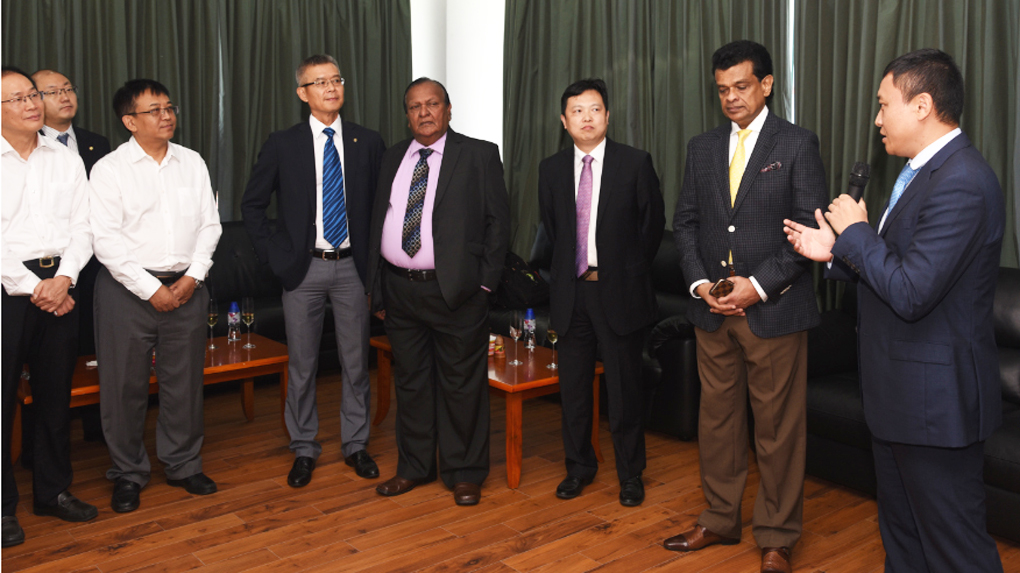
Commissions 40 electric-powered gantry cranes to lead port’s efforts to minimise environmental impact
Colombo International Container Terminals (CICT) has completed a project to convert the company’s diesel-operated rubber-tyred gantry cranes to electric-powered rubber-tyred gantry cranes or E-RTGs, making a major contribution to efforts by the Port of Colombo to go Green.
Costing more than US$ 10 million, the project has resulted in CICT deploying 40 zero-emission E-RTGs at the company-managed Colombo South container terminal, achieving a 45 per cent reduction in the terminal’s overall carbon dioxide emissions to the environment and a reduction of more than 95 per cent in diesel consumption.
Commenting on the E-RTG project, CICT CEO Mr Ray Ren said: “This initiative demonstrates CICT’s as well as our parent company CMPort’s commitment to reduce greenhouse gas emissions in the Port of Colombo and the maritime industry as a whole. We believe in leading from the front in the sphere of caring for the environment, even at a time when some stakeholders in the global industry are still said to be driven by costs rather than green ethics. This is just one of several environment-related CICT projects in the pipeline, and we intend to continue investing on initiatives to reduce emissions.”
The electrification of CICT’s rubber-tyred gantry cranes involved modification work of fitting electricity collector trolleys in the RTG cranes and constructing a Conductor bar system (Bus-Bar) in the terminal for the cranes to function with electricity. Recognised around the world as an innovative port technology, E-RTGs have been proven to deliver significant environmental, technological and financial benefits to terminals.
Their environmental benefits include reducing air and noise pollution; in economic terms they reducing operating and maintenance costs and in terms of technology represent an optimisation of productivity and performance.
From its inception in 2013, CICT took the first step towards addressing environmental concerns by specifying and installing state-of-the-art hybrid-diesel engines for the full fleet of rubber-tyred gantry cranes. These engines had minimal impact on the emission of environment-impacting gases.

However, with the growing emphasis on addressing and reducing environmental damage on a continuous and sustainable basis in the maritime and port industry, CICT decided to make further significant capital investments in its contribution to reduce green-house gases.
In recognition of the importance of the E-RTG project, the ceremonial commissioning of the electrified gantry cranes was attended by several dignitaries including the Chairman of the SLPA Dr Parakrama Dissanayake, Vice Chairman Mr P. G. Dassanayake, Mr Ranjan Sibera, Director Investment Appraisal at the BOI, Mr Ananda Rajakaruna, Executive Director Imports at the BOI, Mr Hang Tian, Chairman of CICT, and senior representatives of CICT, CMPort, Haiqin (the project consultant), and ZPMC International Group and ZPMC Lanka, the project constructor.
CICT, which commenced operations in July 2013, manages the Colombo South Terminal of the Port of Colombo, the first and currently the only deep water terminal in South Asia equipped with facilities to handle the largest vessels afloat. The commencement of CICT’s operations is widely credited as the factor in the Port of Colombo achieving double digit growth in 2014 after a lapse of over ten years.
In just three years of operation, CICT has brought some of the largest vessels plying the Asia-Europe routes to Colombo. Of these, Milan Maersk (20,568 TEU), MSC Maya (19,224 TEU), Mogens Maersk (18,300 TEU), MSC New York (16,652 TEU), CMA CGM Marco Polo (16,020 TEU), Edith Maersk and EMC Thalassa Hellas (each 14,000 plus TEUs) and their sister vessels are now regular callers at CICT.


